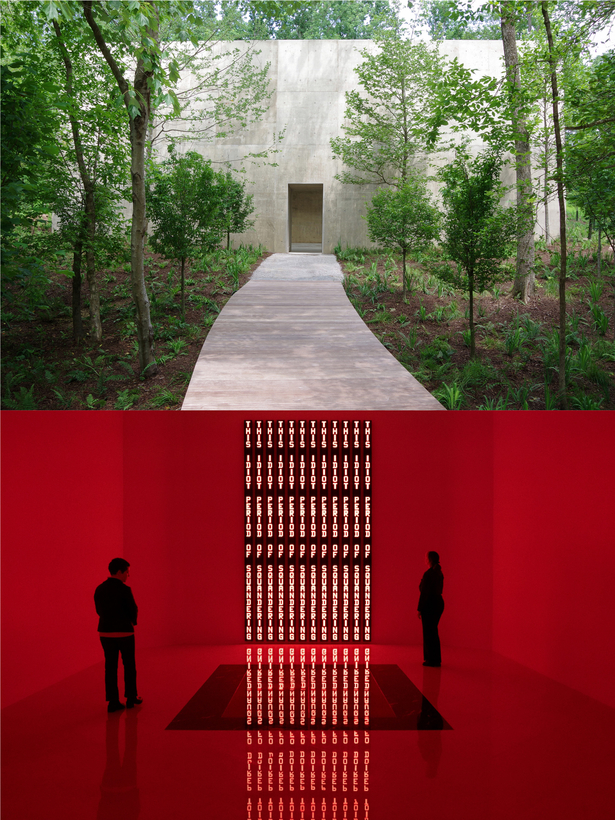One of the most intriguing museums in America is located down a narrow road, behind a stone wall, hidden by hills. Called Glenstone, it’s in Montgomery County, Maryland, just beyond the Washington, D.C., subdivisions named after bygone farms. According to the art collector Alain Servais, it is “probably the best private museum and collection on earth.” You can visit for free.
Founded by the philanthropist Mitchell P. Rales (net worth: $6 billion) and his wife, Emily Wei Rales, who is the museum’s director, Glenstone opened in 2006, underwent a major expansion in 2018, closed during the pandemic, and then closed again in 2024 for a roof repair in the new exhibition hall. The museum is now fully open again.

Unlike D.C.’s more well-known museums on the National Mall, Glenstone is not thronged by tourists. That is by design. As the senior Glenstone curator Nora Severson Cafritz explains, the aim here is to slow things down, to let the artworks speak for themselves—and to allow visitors to hear what the works are saying. The museum is a leader in the “slow art” movement, which asks museum-goers to focus intensely on a work or two instead of rushing to check masterpieces off a list.
“We’re really proud that we are offering something that is an alternative model to the typical museum experience,” Severson Cafritz said as we walked through the 11 galleries of the Pavilions, each dedicated to an installation by a single artist. One room, for example, is devoted to Robert Gober’s Untitled (1992), an unsettling mix of prison and forest scenes, with bundles of New York dailies scattered throughout. Another room is given over to Jenny Holzer’s The Child Room, a bracingly red chamber with one of her trademark slogans, repeated vertically: “This idiot period of squandering.” It’s a work from 1990, with a message fitting for 2025.

There is no explanatory text on the walls. Instead, docents engage visitors in conversation, offering an informal but informed précis on the work in question. In all, there is little signage, little to distract the eye from the art itself.
Perhaps no one piece is as impressive as the Pavilions themselves, a masterwork of eco-brutalism by the American architect Thomas Phifer. Consisting of 26,000 concrete blocks, the Pavilions do not dominate the way earlier iterations of brutalism tend to. Here, the boxy contours settle into the hills, as if trying to make amends. Ample plantings of native grasses further soften the sharp angles of each bunker-like gallery. The showstopper is the interior courtyard, which has been turned into a half-acre pond, water lilies and all. A bench looking out over the water was designed by the sculptor Martin Puryear, a Washington, D.C., native, working with the Philadelphia-based furniture-maker Michael Hurwitz. Somehow, the architecture and landscaping are austere yet inviting, organic but intentional.
“What we’ve built out here is an opportunity to commune not just with art but also with architecture and nature,” Severson Cafritz tells me. The museum sits on 300 acres along the Potomac River, and there are several miles of trails, as well as outdoor sculptures by Richard Serra and Jeff Koons, whose contribution is Split-Rocker (2000), a half-dinosaur, half-horse statue standing 37 feet high and covered in more than 50,000 flowers. While I agree with Jed Perl’s memorable Koons takedown in The New York Review of Books, Split-Rocker managed to win me over with its color and scale.

Less impressive architecturally than Phifer’s Pavilions is Charles Gwathmey’s Gallery, the main exhibition hall from 2006, a postmodern jumble where works from the Rales’s enormous collection are on display. On the other hand, the art here is more familiar and accessible than the sometimes inscrutable installations in the Pavilions. When I visited earlier this summer, the Gallery was showing works by Lee Krasner, Jean-Michel Basquiat, and Jasper Johns.
As a private museum with net assets of $4.6 billion—almost equal to the Met’s—Glenstone is not subject to political mandates or culture-war crusades. “We’re working on long-term projects and site-specific works,” says Severson Cafritz. “We’re still figuring out exactly what the final Glenstone experience will be.”
Alexander Nazaryan is a Washington, D.C.–based writer whose work has appeared in The New York Times and The Wall Street Journal

